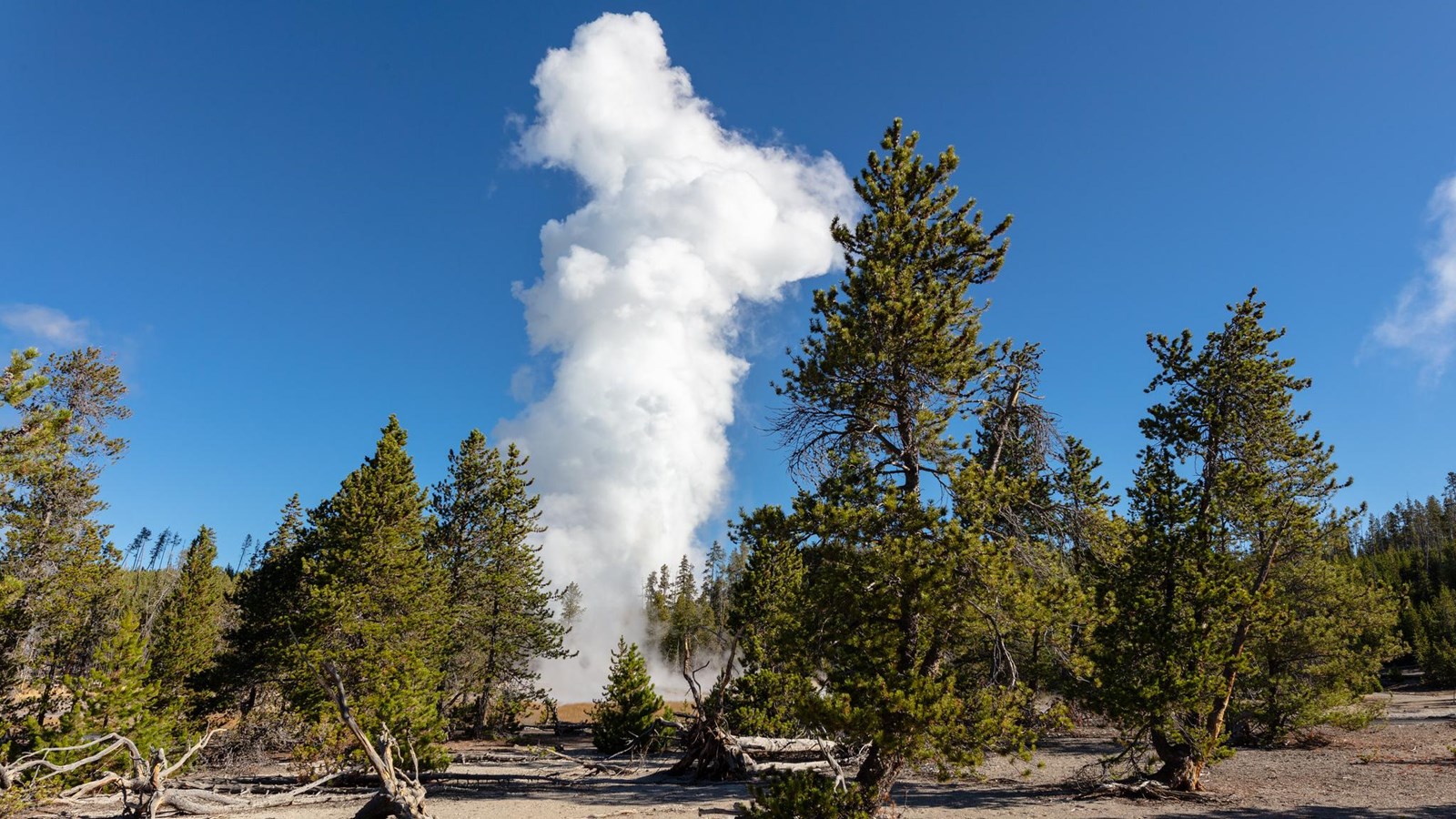Last updated: December 3, 2024
Place
Steamboat Geyser

NPS / Jacob W. Frank
Historical/Interpretive Information/Exhibits
Steamboat Geyser is the world’s tallest active geyser. It showers watchers and drenches the walkway. Days, months, or years pass between the major eruptions of Steamboat Geyser.
Steamboat Geyser’s major eruptions (more than 300 feet high) are unpredictable and often many years apart. Its frequent “minor phase” eruptions eject water 10 to 40 feet high.
For hours following its rare 3 to 40 minute major eruptions, Steamboat thunders with steam. Full eruptions are unpredictable.
Steamboat Geyser and Cistern are linked underground, confirmed in 1983 when Cistern Spring began emptying after each major eruption of Steamboat.
Only Waimangu Geyser in New Zealand has rocketed to greater heights—but not in more than one hundred years. In Yellowstone National Park's recorded history, only two other geysers have exceeded Steamboat in size: Excelsior Geyser in Midway Geyser Basin and Sapphire Pool in Biscuit Basin.
Eruption History Since 2000
- 10 in 2022 ( as of November 17)
- 20 in 2021
- 48 in 2020
- 48 in 2019
- 32 in 2018
- 1 in 2014 (9/3)
- 1 in 2013 (7/31)
- 1 in 2007 (2/21)
- 1 in 2005 (5/23)
- 3 in 2003 (3/26, 4/27, and 10/22)
- 2 in 2002 (4/26 and 9/13)
- 1 in 2000 (5/22)
Geysers
Geysers have constrictions in their plumbing systems that prevent water from moving freely to the surface where heat would escape. Water beneath the constrictions creates a buildup of steam. Eventually the steam pushes water past the constrictions and the geyser erupts.
Norris Geyser Basin
Norris Geyser Basin is one of the hottest and most acidic of Yellowstone’s hydrothermal areas. It is outside of the most recent Yellowstone caldera, but inside the first and largest caldera. It sits on the intersection of three major faults and is a very active earthquake area.
Each year, new hot springs and geysers appear while others become dormant. Geologic events trigger many of these changes. Even small earthquakes can alter hydrothermal behavior. This sudden activity is known as a “thermal disturbance” and can last a few days, or more than a week. Gradually, most features return to “normal.”
No one fully understands why this happens. Norris has the greatest water chemistry diversity among Yellowstone’s hydrothermal areas. The water chemistry changes as the water levels of underground hot water reservoirs fluctuates.
Although Norris is known for its acid features, it also have alkaline hot springs and geysers. As underground water and chemistry shift suddenly, they could contribute to dramatic changes in minerals and pH.
Parking
Parking at Norris Geyser Basin is extremely limited, especially with the recent activity of Steamboat Geyser. Please follow all posted signs or ranger directions. Be prepared to have to come back at a different time of day. Park at your our risk. When Steamboat Geyser erupts, dissolved minerals in the spray can damage glass and paint on your vehicle.
Use Caution in Hydrothermal Areas
- Stay on boardwalks and designated trails.
- Hydrothermal water can severely burn you.
- Never run, push, or shove.
- Supervise children at all times.
- Do not scratch hydrothermal mats.
You are responsible for your safety.
Think safety, act safely. Yellowstone is a dangerous place.
